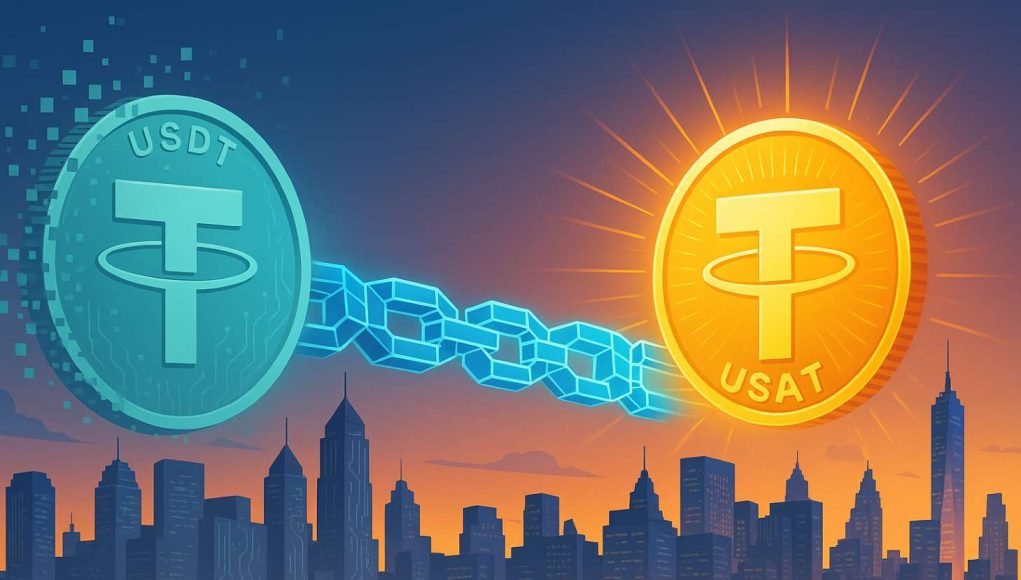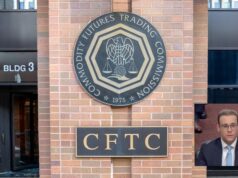Tether has unveiled USAT, a new regulated stablecoin designed for the U.S. market, marking the company’s most significant strategic pivot since the global rise of USDT. The token is structured to comply with the GENIUS Act and broader U.S. stablecoin regulation, with Anchorage Digital handling issuance and Cantor Fitzgerald safeguarding reserves. To lead the project, Tether appointed Bo Hines, a former White House digital assets adviser, as CEO of the U.S. subsidiary. The move sets Tether up for a direct clash with Circle’s USDC, the current leader among onshore stablecoins.
Why USAT, Why Now
For years, Tether stablecoin USDT dominated global markets but faced mounting scrutiny, especially in Europe under the EU’s MiCA framework. By contrast, the U.S. has introduced clearer guardrails through the GENIUS Act, creating a fresh opening. USAT allows Tether to pivot from being the outsider to competing onshore under American rules. Executives, led by CEO Paolo Ardoino, are now pitching Tether not just as a liquidity engine but as a compliant, responsible player in the U.S. ecosystem. The involvement of Anchorage Digital and Cantor Fitzgerald reserves is central to that message, signaling institutional-grade oversight.
The Power Behind the Push — Tether’s Profits
Part of what makes this pivot possible is Tether’s profitability. High interest rates on U.S. Treasuries have delivered billions in quarterly returns. This places Tether in the league of mid-sized American banks in terms of earnings power. The company can bankroll expansion without relying on an IPO or outside investors. While Circle has taken the public company route, Tether insists it will remain a private company, keeping control in the hands of its small group of owners.
Beyond Stablecoins — Tether as an Investor
The USAT launch is just one piece of a larger Tether investment strategy. The company is now one of the largest corporate holders of Bitcoin. It also allocates reserves to gold and real estate.
Tether has purchased land and invested in renewable energy projects to support Bitcoin mining and infrastructure in emerging markets. As a result, its diversification strengthens reserves, hedges risks, and builds long-term resilience beyond dollar-linked assets.
Supply Games: Burn and Mint Moves
In the days surrounding the USAT rollout, Tether conducted a $1 billion USDT burn, presenting it as a sign of supply discipline and reserve management. Almost simultaneously, it executed a $1 billion USDT mint on Ethereum to meet liquidity demand. This dual move shows the tension between optics and operations. While Tether highlights its restraint, demand-driven issuance continues to expand supply where markets need it most.
Political Firepower
Alongside financial and technical moves, Tether is also playing a political game. The hiring of Bo Hines connects the company to Washington, ensuring that someone with policy and regulatory experience leads the U.S. stablecoin division. In addition, reports point to Tether funding pro-crypto PACs to support advocacy efforts on Capitol Hill. Together, these steps suggest Tether is preparing to fight for influence over how future stablecoin regulation in the U.S. will take shape.
Market Stakes
The launch of USAT raises the competitive stakes. Circle USDC currently dominates the regulated U.S. market, while Tether’s offshore USDT still commands global liquidity. However, if Tether can establish trust with regulators and win adoption for USAT, it could control both sides of the market: the world’s largest offshore stablecoin and a strong, compliant onshore counterpart. For traders, institutions, and policymakers, this shift would fundamentally alter the balance of stablecoin market share. In this scenario, Tether stablecoin offerings would span both offshore and regulated onshore markets.
>>> Read more: Tether Stablecoin Faces Pressure and Reinvents Itself
Outlook
Tether’s USAT is more than just a new token: it is a statement of intent. With billions in profits from Treasuries, diversified holdings in Bitcoin and hard assets, and growing political influence, Tether is positioning itself as a permanent fixture in American finance. The challenge now is whether U.S. regulators and institutions will accept a company that once thrived outside the system as a credible, compliant leader inside it. The launch of USAT marks the beginning of that test.
Readers’ frequently asked questions
How will USAT be different from Tether’s existing USDT stablecoin?
USAT is designed specifically for the U.S. market and complies with federal rules under the GENIUS Act. Unlike USDT, which is issued offshore, USAT will be issued through Anchorage Digital and backed by reserves custodied with Cantor Fitzgerald to meet regulatory requirements. Once the new regulations take effect, USDT will no longer be accessible to U.S. customers on regulated platforms, making USAT the only Tether stablecoin available domestically.
When is USAT expected to launch for public use?
Tether announced USAT on September 12, 2025, and executives indicated that the stablecoin should go live before the end of 2025. The timeline depends on finalizing regulatory and banking arrangements.
What does Tether’s profitability mean for users of USAT?
Tether’s large profits from U.S. Treasuries give it a financial cushion to support new ventures. For users, this means the company has the resources to maintain reserves and expand services without relying on outside capital. It also reduces the risk that sudden funding needs could disrupt the stablecoin’s backing.
What Is In It For You? Action items you might want to consider
Prepare for USDT’s phase-out in the U.S.
If you trade or hold USDT on regulated platforms, be aware that it will no longer be available once federal rules take effect. Plan to transition holdings into USAT or another compliant stablecoin.
Watch the institutional adoption of USAT.
Track announcements from exchanges, payment processors, and fintechs. Their pace of integration will be the clearest signal of how quickly USAT gains traction against Circle’s USDC.
Monitor Tether’s diversification moves.
Keep an eye on Tether’s investments in Bitcoin, gold, and energy projects. These decisions affect its balance sheet strength and could impact confidence in USAT’s long-term stability.











[…] >>> Read more: Tether Launches USAT, U.S. Regulated Stablecoin […]
[…] >>> Read more: Tether Launches USAT, U.S. Regulated Stablecoin […]